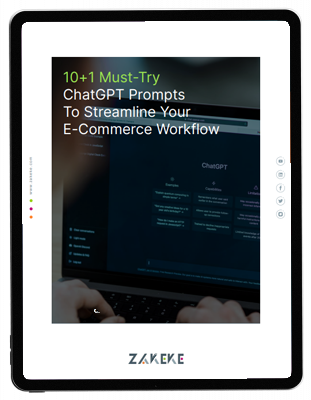One of the primary reasons behind eCommerce content is to educate customers. Brands that put extra effort into guiding current and prospective customers can expect more conversions.
More often than not, online merchants focus on in-depth articles they publish to a dedicated blog.
However, content strategy for eCommerce should not begin and end with just plain articles. It should also include:
- Videos
- Infographics
- Studies
- Social media posts
After all, variety helps modernize and differentiate your brand from the rest. Every little bit helps in a competitive environment.
Having said all that, building an effective eCommerce content strategy is not that straightforward.
Once the foundation is established, it’s also imperative to go back and ensure that the content is up to date.
How to build an effective content marketing strategy for eCommerce
Here are the key steps to build a successful eCommerce content strategy:
1. Periodically revise content strategy
Let’s start with content revision. Over time, there are bound to be outdated content pieces that become irrelevant.
Some eCommerce businesses archive or delete the content to avoid potentially misleading customers.
Others, meanwhile, dedicate time and other resources to update old articles, videos, etc. Sometimes, changing statistics or adding a new bit of information is enough to revitalize a piece.
And once such a piece of content is updated, you can republish it and treat it as a new article, encouraging customers to check it.
Revising an entire content strategy for ecommerce varies depending on different factors. In some cases, a brand might move to an entirely different manufacturing process, changing its materials. Such a brand would have to change product descriptions with updated details.
The way new information is presented shouldn’t change. Yet, for example, if an opportunity to take higher-quality videos and product photos presents itself, why not take it?
2. Use user-generated content
User-generated content plays a prominent role in eCommerce content marketing strategy. According to a study by EveryoneSocial, UGC encourages conversions by almost 30%.
Consumer-generated content appears more genuine and trustworthy than ads pushed by brands directly to customer feeds.
Shopping online comes with the risk of not knowing what to expect. Reviews by other shoppers, arguably the most effective UGC, guide new customers, whether they come with visuals or not.
Modern shoppers also have an easier time identifying authentic information and branded advertising. An emphasis on UGC humanizes a brand in a customer’s eyes and makes the shopping experience more authentic and relatable.
Finally, user-generated content can fill the void in a brand’s eCommerce content strategy. Customers have different perspectives. Collaborating and encouraging them to submit not just reviews but blog posts is a worthwhile approach.
3. Focus on SEO optimization
A well-crafted eCommerce content strategy widens SEO possibilities. Focusing on learning about relevant keywords results in a better understanding of customer behavior.
There’s intent behind each keyword, and tailor-made content revolving around these keywords attracts more conversions.
The benefits of SEO for eCommerce don’t stop there. You can also expect:
- Potential customers discovering your site if it’s ranking at the top of search search engines;
- A push to improve the website and user experience since search engines prioritize user-friendly and device-friendly sites;
- Long-term benefits if you play your cards right and show patience.
4. Keep an eye on the Analytics
A content strategy for an eCommerce website should never be static. As mentioned before, don’t ignore content revision. Reimagine and update the content depending on how the brand and the industry change.
But don’t stop there. Track and analyze the content’s performance to determine what’s working and what isn’t.
Most marketing channels use revenue as a measure of success. In content marketing, revenue isn’t the be-all and end-all metric.
It’s better to focus on page views, bounce rates, click-through rates, subscriber growth (for newsletters), social media engagement, and so on.
Poor metrics indicate that you need to change your eCommerce content strategy. On the other hand, if you are happy with the results, don’t stop there. Remember that there’s potential to go even higher, so don’t be afraid to try new things.
Can small businesses also implement an effective eCommerce content strategy with limited resources?
Small businesses have fewer resources to dispose of, which puts them at a disadvantage against bigger brands.
Nevertheless, a small business shouldn’t give up on eCommerce content. If anything, they should prioritize developing a strategy and reaping the benefits.
At the end of the day, infinite resources mean nothing if the content quality is poor. Small businesses have opportunities to develop a brand from scratch and connect with customers via social media, newsletter campaigns, or valuable blog posts.
A unique selling point should be at the heart of the eCommerce content marketing strategy. Large businesses have enough generic content to show off, so it makes no sense to compete with them on that front.
Collaborate with micro-influencers instead of A-listers and appeal to their smaller yet engaging audiences. Focus on keywords that have lower search volume but are easier to rank.
Lastly, revise the content and update where necessary, so you continue moving forward and growing your brand.

Laura Alexander
E-Commerce Content Manager
Laura Alexander is a freelance digital content manager and copywriter. Specializing in tech, ecommerce, and educational content, she had her work appear in publications like Omnikick, Pomodoneapp, Sortlist, and Price2Spy.















